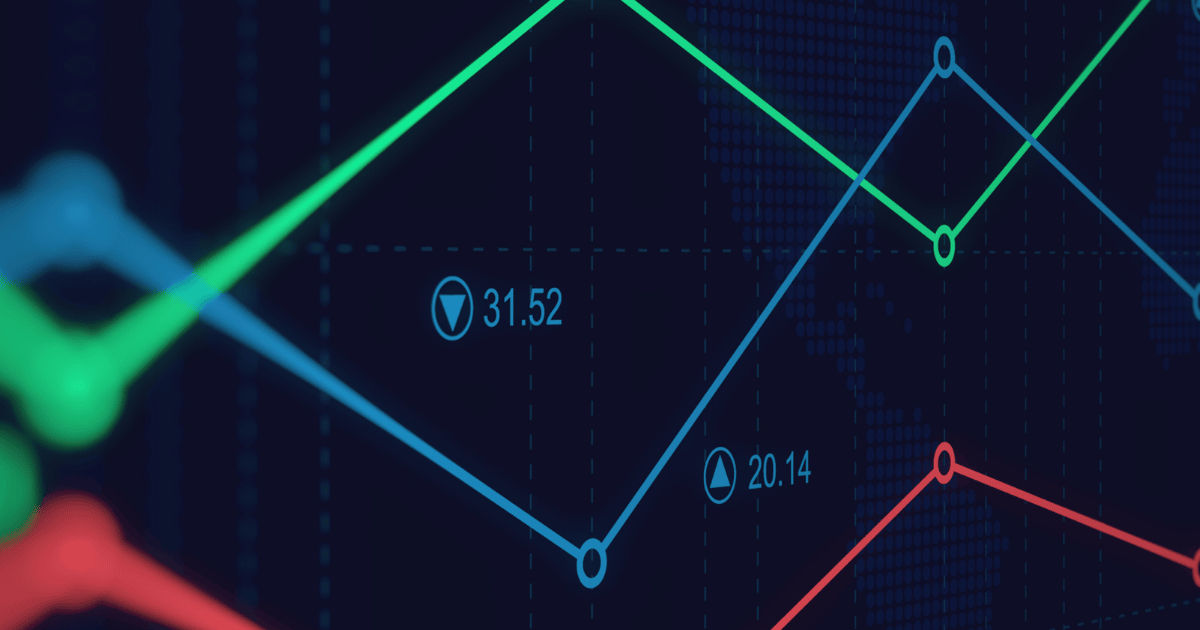
2024 saw the release and development of several key technologies that will change the way companies operate. This article looks at some of the most impactful tech releases from last year, along with our predictions for the upcoming technology in 2025 that will have the biggest impact.
Generative AI
In 2023 scores of workers were using generative AI or planned to. AI-enhanced tools have been used to create content, write code, produce images, streamline working processes, increase engagement and improve security.
In the past year, 80% of companies reported higher buyer satisfaction due to generative AI with 85% showing an increase in user engagement.
In terms of cybersecurity, 2 out of 3 organisations studied in 2024 stated they’re deploying security AI and automation.
65% of generative AI users are Millennials or Gen Z although this number should drop down to around 58% for 2025 and then further to around 50% as the technology is more widely adopted in the following years.
Consider smartphones and how they were once products sold mostly to the younger generations but have quickly become commonplace with an older demographic as the technology became more widespread.
Artificial intelligence will continue to evolve rapidly and 2025 will see a number of significant changes in how businesses operate.
Agentic AI Handling Work Decisions
“According to a Capgemini Research Institute survey of 1,500 top executives globally, 32% of them place AI agents as the top technology trend in data & AI for 2025.” - Pascal Brier, chief innovation officer, Capgemini.
Agentic AI systems work slightly differently from a traditional AI model and do not require explicit instructions. They work towards achieving a particular goal that has been set and are capable of carrying out complex tasks automatically.
This should have an impact across most business sectors throughout 2025 as the adoption of agentic AI increases.
For example, agentic AI can take an overall objective such as building a website and break it down into smaller steps that are carried out by the system.
So the agentic AI in this instance might look at the basic brief for the site i.e. selling an app or a product, then go on to plan the site map, create the graphics, generate the content, write the code and perform testing to check for any errors.
Then the first time a human would intervene is when the finished product, a fully functional website, is presented to the user -if there is any user at all.
There would not be a “user” of the website itself as that role would also fall to the agentic AI system. By analysing the incoming data on performance the agentic AI system would adapt the marketing strategy to suit the shifting environment.
For example: better engagement is registered with the red coloured background compared to blue, resulting in site graphics being switched to a red colour scheme.
Gartner predicts that by 2028, agentic AI will be handling 15% of all work decisions.
This could in fact be quite a conservative estimate. Although a significant jump from the 0% of decisions handled by agentic AI in 2024, it is easy to underestimate the exponential speed of the evolution of AI-enhanced tools.
Apart from the next iteration of software being more advanced than the previous, the tools themselves are constantly adapting, learning new things and adding to their abilities with machine learning.
If 2025 sees the adoption of agentic AI in a number of business sectors then we could see a larger proportion of business decisions being handled by this process.
In 2024 49% of companies were using ChatGPT with over 80% of Fortune 500 enterprises having integrated ChatGPT into their workflows within nine months of its launch in November 2022.
Within two years this particular AI tool has gone from nonexistence to almost half of all companies using it. Agentic AI will be an even more powerful and useful tool so it could be argued that the adoption rate would be even faster.
It is important not to underestimate the explosive nature in which AI-enhanced tools expand their reach and transform the working processes of businesses that adopt their use.
It could be argued that it would not take 4 years for 15% of business leaders to recognise the effectiveness of agentic AI. By this point, the next wave of AI tools could be operating the agentic AI themselves, or replacing that technology.
Quantum Computing
Quantum computing has seen significant advancements in 2024 with IBM, Google and Amazon all expanding their services to offer quantum cloud solutions, making it easier for businesses to make use of quantum computing.
Quantum computing could revolutionise data processing, security, and problem-solving in a variety of business sectors.
Industries like logistics, pharmaceuticals, and financial services can use quantum computing to solve complicated optimisation problems that normal computers would struggle to deal with.
Quantum computers can assist with drug design, and simulations of complex molecules and compute large volumes of data on market trends, helping to make more informed decisions.
Quantum Computing Impact on Cybersecurity in 2025
Quantum computing could significantly help to redefine current encryption methods. This will mean that data communications will be ultra-secure.
However, in the ever-shifting battle of cybersecurity and criminal elements, quantum computing advancements will also render current encryption standards unsafe by 2029.
Why will current encryption standards be unsafe?
For a normal computer to work out the “prime factors” involved in today’s encryption methods, this would be estimated to take around a billion years for the standard computer to eventually crunch through the calculations.
Using a quantum computer, however, breaking the encryption code could take days or even hours, meaning that even the most sensitive government secrets and financial details could be up for grabs.
In this new era of advanced computing performance, a new form of security will be required—post-quantum cryptography.
What is post-quantum cryptography?
Post-quantum cryptography is a form of encryption that even quantum computers would struggle to hack into.
PQC uses a much more complex method based on more difficult mathematical principles such as the elliptic curve, going back to Ancient Greek times.
There is also a similar-sounding, but slightly different method called quantum cryptography that relies on quantum principles from the 20th century, which is also difficult to hack, even for advanced quantum computers.
Basically, the data will have to be encrypted using quantum principles and quantum computers themselves, so that quantum computers in the hands of criminals would not be able to break the code.
AI-driven Cybersecurity Solutions
With cyber threats becoming more sophisticated, AI-driven cybersecurity tools will evolve to detect, prevent, and respond to cyberattacks in real time.
Companies like CrowdStrike, Darktrace, and Palo Alto Networks are integrating AI and machine learning to enhance security operations.
AI will help identify vulnerabilities and threats before they cause significant damage. AI-based systems will be able to automatically neutralise threats, reducing response times and minimising human error.
Aside from the threat from quantum computing in the hands of organised hackers, the industry will need to prepare for the advent of AI-based cyber attacks and malware that will adapt to security measures.
Autonomous Vehicles and Robotics
In 2025, we can expect further development in autonomous vehicles. This includes trucks, drones, and robots for deliveries, logistics, and infrastructure management, offering faster and more cost-effective solutions.
In terms of construction, the industry will be impacted by the adoption of technology such as swarm drones completing large infrastructure projects. Bricklaying and 3D printing drones will reduce costs while expanding the potential of what can be achieved in engineering terms, allowing more ambitious designs than before.
Extended Reality
Extended reality is the umbrella term that includes such technology as virtual reality (VR) and augmented reality (AR).
Virtual and augmented reality technology is becoming more advanced and cost-effective.
Some new extended reality (XR) headsets in 2024 include the Apple Vision Pro, Meta Quest 3S, and Sony Spatial Content Headset.
XR technologies are transforming training and customer experiences. They will enable more immersive collaboration between teams operating remotely in 2025.
Industries like healthcare, aerospace, and construction will benefit from VR simulations for hands-on training without physical risks.
Retail and real estate industries will improve customer engagement through virtual product demonstrations, virtual tours, and interactive experiences.
AI Training AI, AI Training Humans, and Multifunction AI Suites
To forecast the future of AI development, the best place to look for inspiration is the typical career path for humans in the workforce.
So you start off as a trainee, still learning things and you make mistakes—AI in its infancy.
Eventually, the amount of mistakes you commit is overshadowed by the reasonably good work you have also done and you are now a professional and seasoned employee—AI in its current state today.
So what is next along the career path? After working so long at the company and knowing the ropes you might be experienced enough to start helping new starters, training staff, and becoming a team leader or supervisor.
This is surely where AI development is headed next as it becomes more capable. It will begin training and supervising other AI systems.
How would this look in business terms?
Of course, the training of an AI system from another AI system would not be the same as the long process of day-to-day training in the human workforce.
As AI providers collaborate with similar software developers in complementary industries that do not compete with each other, we should see a situation where the AI systems teach each other their own respective job roles and form hybrid systems capable of multiple functions.
Multifunction AI suites
In the near future, suites of generative AI tools will become available rather than standalone products.
This could include for example an AI package for construction that will generate a floor plan, create a 3D image along with client brochures and photos, whilst sourcing the materials needed and carrying out risk assessments. There are currently separate packages of tools that can carry out individual tasks but no joined-up suite of AI tools that will handle multiple areas of responsibility in this way - although agentic AI is now handling multiple autonomous tasks.
However, this may not take the typical Microsoft Office suite approach where you have one tool that is a word processor, a separate program for spreadsheets, etc. This may be more of an old-world way of thinking and the unification of AI systems that will surely be on the horizon could more likely see AI tools meshing together so they can perform both job roles, as opposed to being included as separate entities.
Currently, there are multiple AI-enhanced tools available on the market although further into the future these are likely to blend together into one overarching AI system that can basically do everything.
AI assisting training
With certain applications such as Leonardo.AI for generating images, there is a feature where the AI system can support you with the prompt you enter to create the image.
So for example, you might write: “photo of a dog on the beach”, and then ask the AI to improve that and it will expand on this: “high-resolution professional quality photograph, the rays of the sun reflect against the waves and project a sense of happiness and joy…”, etc.
This is an easy way to get the AI to do the job for you in a reversal of roles. Humans create AI systems—the AI system tells us how to instruct it to do its own job.
However, this also serves as a way to train us humans in a way and make us better at using the AI tool. You use the suggested prompt a few times and eventually, you get a feel for the sort of instructions the AI image generator wants to hear.
After a certain point, you no longer need the suggested prompt and have effectively been trained by the AI tool you were instructed to perform the task.
Hopefully, the relationship between humans and their AI new starters in the future will be more like the former, with both AI and humans learning from each other in order to become better at their respective roles.
Lyon Tech at the Forefront of Technology
In 2025 the new wave of developments in technology will allow businesses to improve innovation and streamline their working processes.
By integrating AI, quantum computing and advanced automation, companies can drive significant transformations and future-proof their operations.
At Lyon Tech, we help businesses adopt new technology and ensure a seamless integration with their existing systems, so they can realise the full potential of these cutting-edge developments.
For more information on expected trends in technology over the coming years in your industry, contact our expert analysts today.




